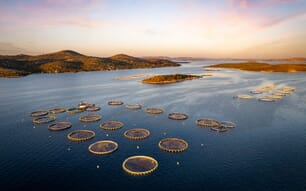A consultation document sets out the approach the Commission intends to take when setting the Total Allowable Catches (TACs) and the fishing effort limitations for the coming year. The Commission points out that slow progress has been made in stock recovery since the 2002 reform of the Common Fisheries Policy. One of the reasons for this is that fishing opportunities consistently have been set at levels which were too high for the fish stocks to sustain. As a result, more than 80 per cent of EU stocks are now overfished, compared with a global average of 28 per cent.
On the other hand, several long-term plans have been implemented successfully, generating signs of stock recovery. The Commission is therefore proposing greater flexibility in changing TACs from year to year, to enable more effective recovery measures for overexploited stocks. Member States and stakeholders are invited to present their views on the Commission's approach by 31 July. The Commission will then make formal proposals in the autumn to be adopted by Council before the end of the year.
Commissioner Joe Borg said: "The situation created by overfishing is serious, but multi-annual management plans are working, and some stocks are already showing signs of recovery. This means that the long-term approach is the way to go and that good management always works. I am committed to a sound approach to fisheries, based on long-term planning, scientific advice and dialogue with the sector - and capable of restoring the productivity of our oceans and seas."
The Communication assesses the current state of the EU fisheries resources, which are drastically overfished compared to most other regions of the world. It then goes on to explain that the contribution of EU fisheries to the European economy and food supply is far smaller today than it used to be in the past. Even more worryingly, the status of some 59 per cent of stocks is unknown to scientists, largely due to inaccurate catch reporting.
A number of changes are needed to address this situation. First, fishing opportunities must be set in line with the level of fishing mortality which will produce the highest yield from the stock in the long-term. In the case of stocks which are seriously overfished, an annual limitation in the TAC variation is producing results which go against the longer-term interests of the industry. For these stocks, the Commission therefore proposes a more flexible approach to year-on-year changes in TACs, on the basis of advice from the Commission's Scientific, Technical and Economic Committee on Fisheries (STECF).
For stocks with a low level of biomass, it is proposed that TACs be reduced by up to 20% a year, as long as fishing mortality does not increase. For those stocks which have recovered beyond the level allowing the highest yield to be taken, TACs could be increased by up to 25 per cent a year. Conversely, when STECF advises a zero catch, TACs should be reduced by at least 25 per cent. For stocks where an analytical assessment is not available, the approach is being revised in light of new scientific advice and with consultation with stakeholders.
Furthermore, in the paper the Commission reiterates its intention to phase out discards. In 2009, significant steps are being taken to address the problem of discards: highgrading (i.e. discarding commercial fish in view of a higher size/price catch) has been banned in the North Sea and Skagerrak, the fishing effort has been further reduced in the context of multiannual plans and there are ongoing pilot studies on how to further reduce discards. Follow-up measures are proposed for 2010.
TACs and quotas must also respect the EU's international commitments and the provisions of long-term management plans. With today's Communication, the Commission wants to facilitate an informed debate with stakeholders on the basic principles which should underpin the Commission's proposals on fishing opportunities for next year.
TACs are set annually for the Baltic Sea, the Black Sea, and the North-East Atlantic including the North Sea. TACs for fisheries on deep sea species are fixed every two years. Fisheries in the Mediterranean are not managed through catch limits, except in the case of bluefin tuna.
Further Reading
| - | You can view the consultation document by clicking here. |


